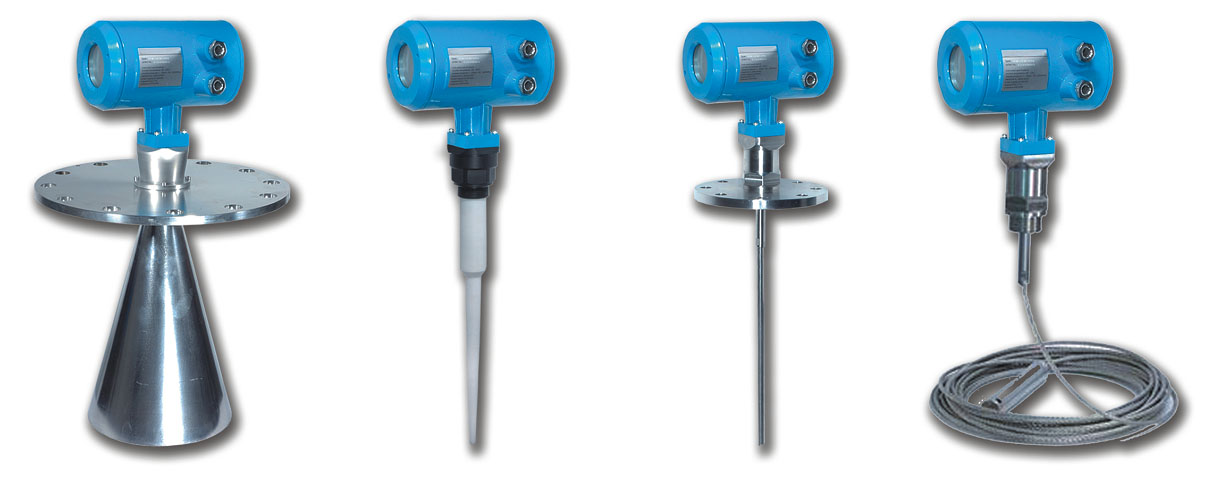1. First of all, come from the sub-structure, a pulse-type radar level gauge fundamental difference between the wave-guiding radar level gauge is a non-contact type and contact type selection based mining environment, the pulse beam angle through the bell mouth To launch and receive microwaves. Guided waves travel through the rod or cable and receive signals. The pulse radar level gauge uses high-frequency or low-frequency wave pulses to transmit and receive through the antenna system. The radar wave operates at the speed of light. The operating time can be converted into a level signal through electronic components. The principle and structure are different. The guided wave radar level gauge is a measuring instrument based on the time travel principle. The radar wave runs at the speed of light. The running time can be converted into a level signal through electronic components.

2. According to the site conditions: What material is measured at the site of solids and powders Pulse radar level meters (such as coal mines, slags, etc.) are usually used. For larger dusts, guided wave radar level meters are used .
3. Consider the dielectric constant of the medium to be measured. The liquid is usually a guided wave radar level gauge. Normally the dielectric constant is greater than 0.7 . The choice of guided wave radar level gauge flange is usually based on the customer site opening size, normal with DN100 flange. Guided wave radar can be divided into rod type and cable. Usually, radar radar level meter is used to make transportation more convenient. However, rod-type radar level gauges are used for corrosion-resistant applications, and impulse -type radar level meters are also considered for liquids that are not corrosive .
4. According to the temperature provided by the site to determine whether to add heat sinks, the temperature is between -30 °C -130 °C of the choice of ordinary type can be greater than 130 °C -250 °C I choose to add heat sink radar level gauge, At present , do not give up when measuring the ambient temperature is greater than 250 °C.
5. Select flange thickness and related information according to the pressure parameters provided on site. For normal pressure, no need to consider.
6. According to the site environment and customer requirements whether explosion-proof, usually chemical liquids, coal mines require explosion protection.
7. If pulse -type radar level gauges are used , we have a conservative choice for the choice of horn. We should try our best to ensure that we can ensure the stability of our customers' measurements.
8. According to the on-site measurement range, it is worth noting that the pulse-type radar level meter is divided into two types: low-frequency pulse radar level meter and high-frequency pulse radar level meter . The limit height that can be measured by the low-frequency pulse radar level gauge is 35 meters, and the height limit that can be measured by the high-frequency pulse radar level gauge is 70 meters. Guided wave radar level gauges are also divided into two types. One is a rod type radar level meter and the other is a cable type radar level meter . The limit range of the rod-type radar level meter is 6 meters, while the limit range of the cable radar level meter is 30 meters. With these decisive parameters taken into account, the most suitable level gauge can be selected.
We have supplied our Lighting poles to Australia, Columbia, England, Kuwait, Iraq, Philippines, Pakistan and etc.
Our Lighting poles are made from quality sheet through bending, forming, automatic welding and hot galvanization. We can reach one-run machining length of 14m and can bend sheet of thickness up to 45mm. We adopt advanced welding procedures, automatically weld main joints and reach rank-II welding quality.
Lighting Pole, Transmission Line Pole, Solar Lighting Pole, Single Arm Lighting Pole
Jiangsu Xinjinlei Steel Industry Co., Ltd. , http://www.steel-pole.com